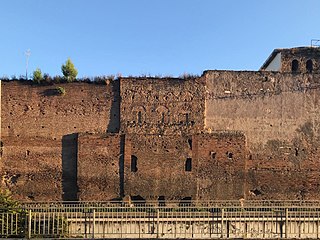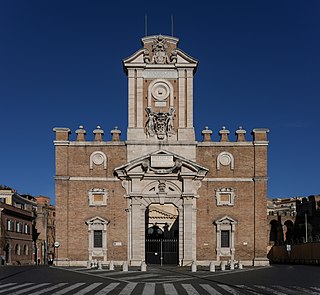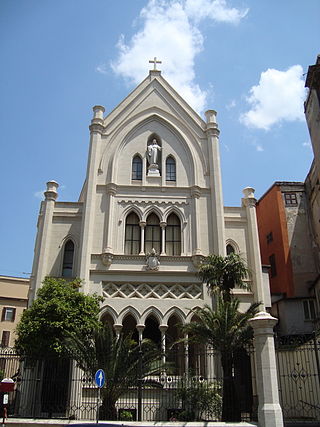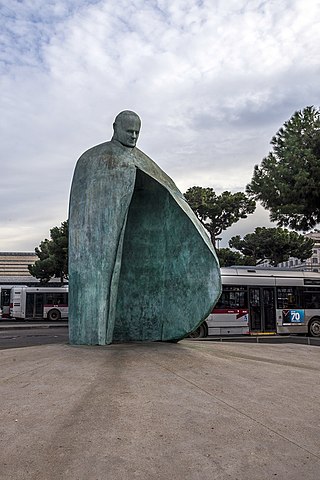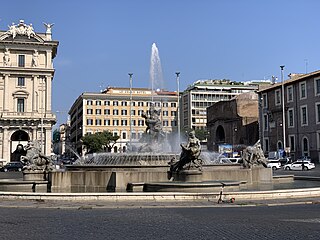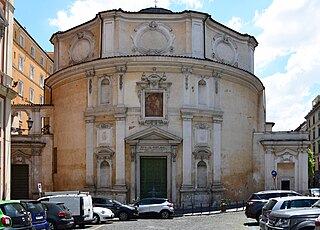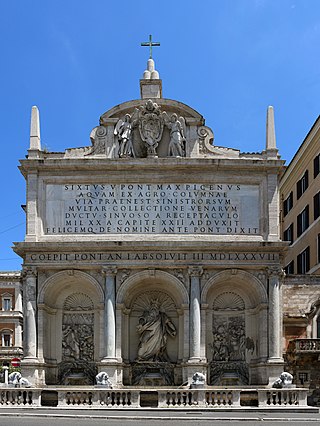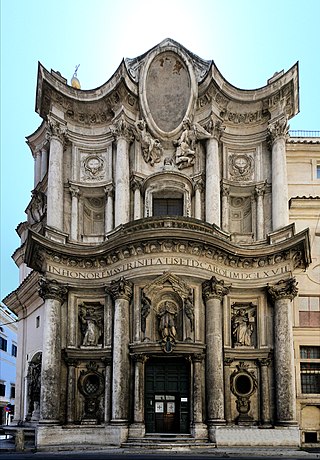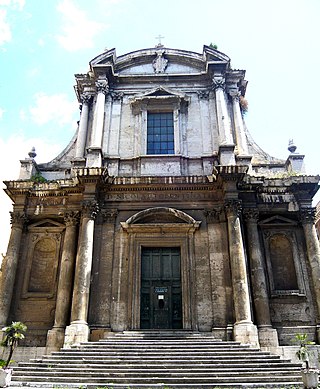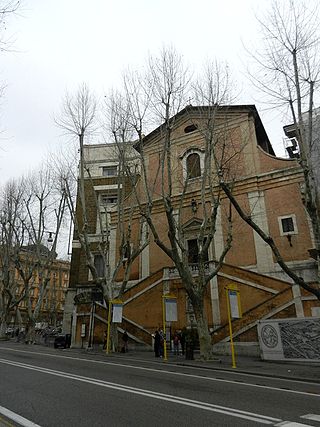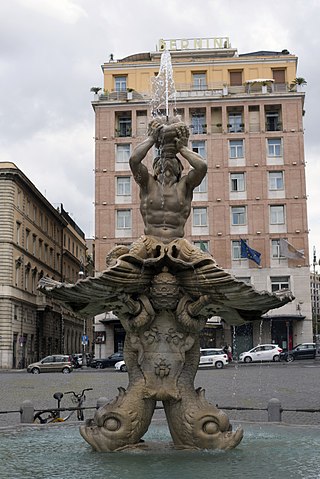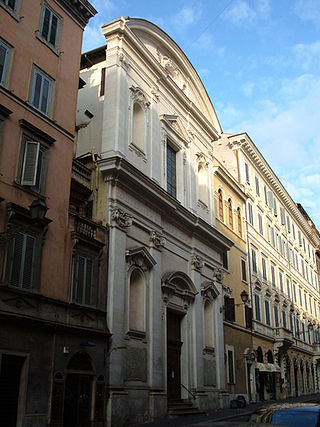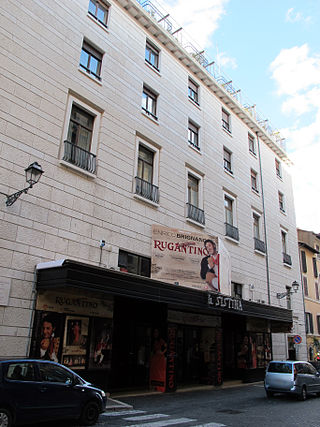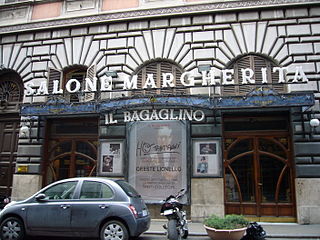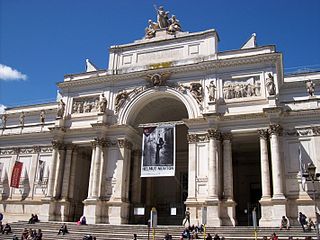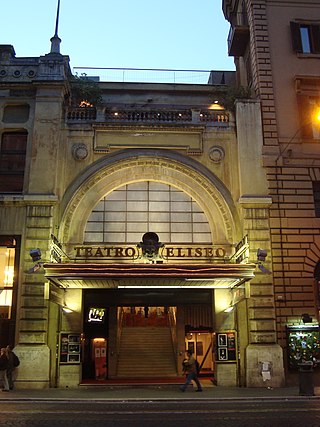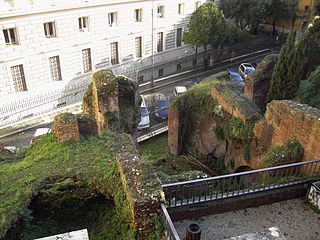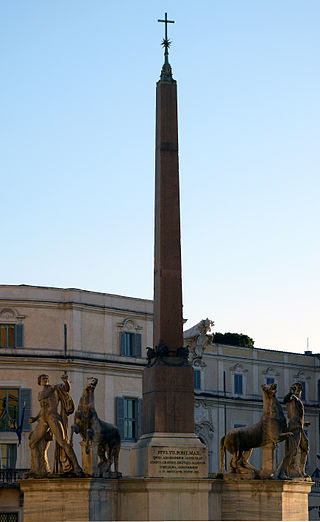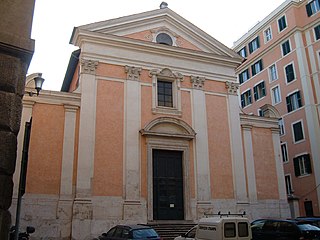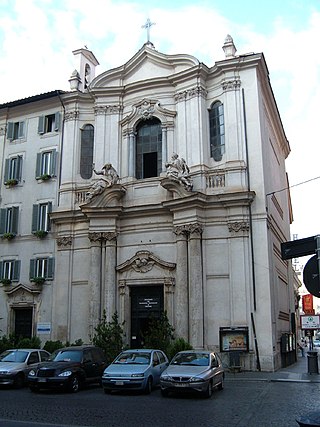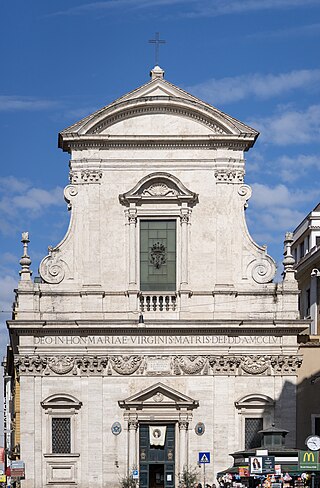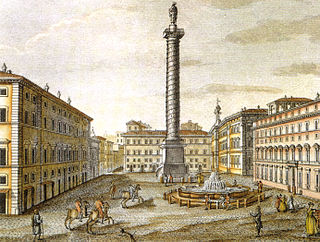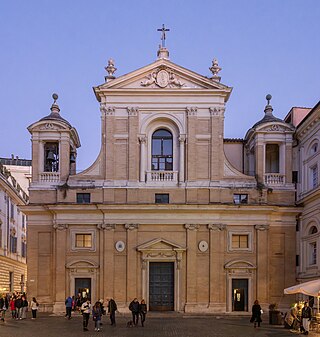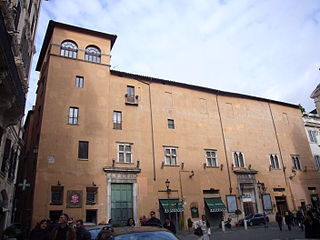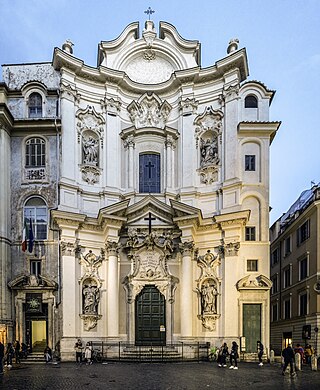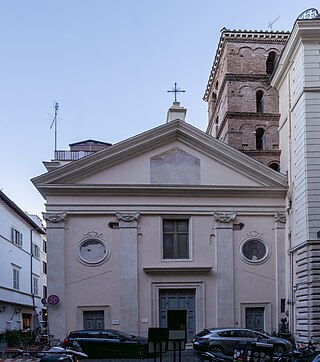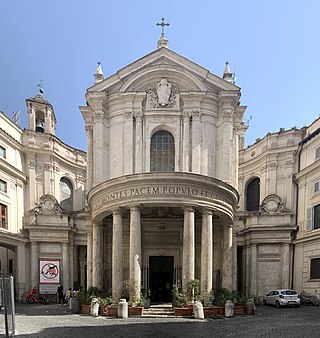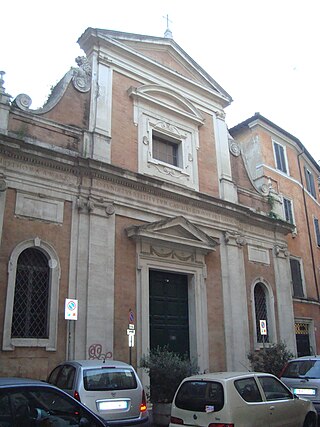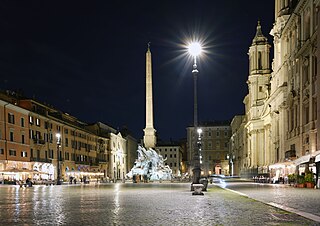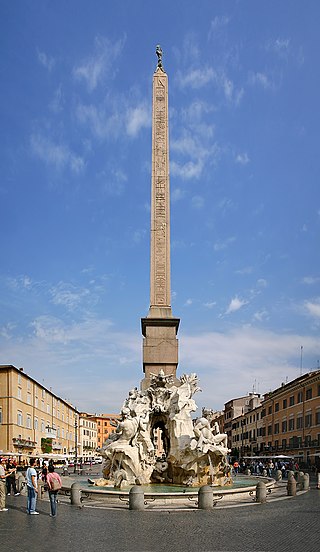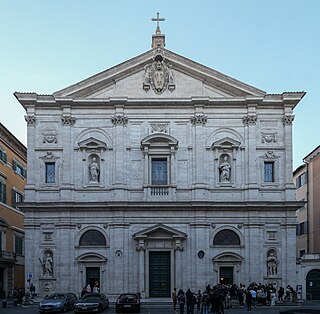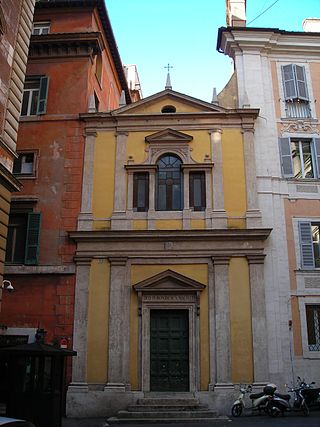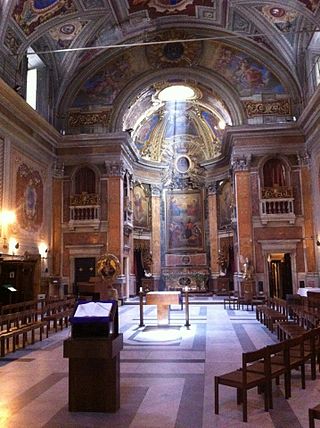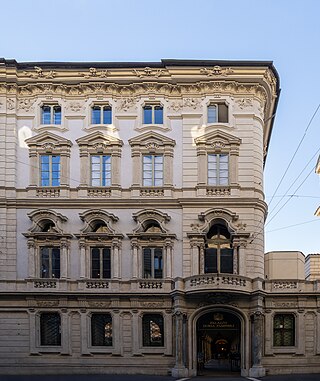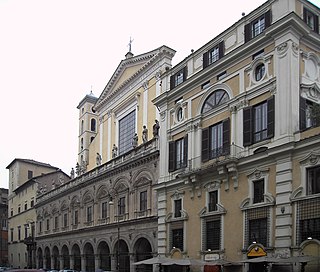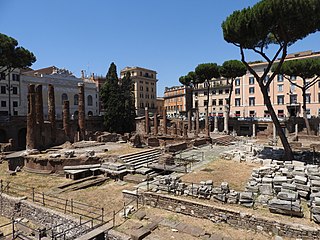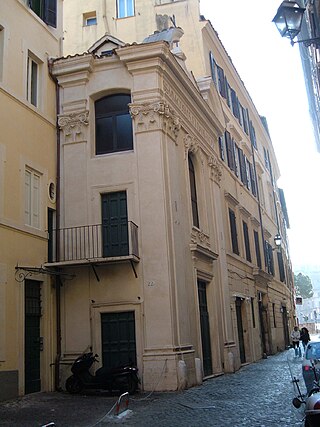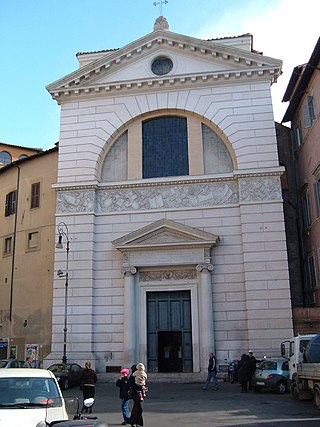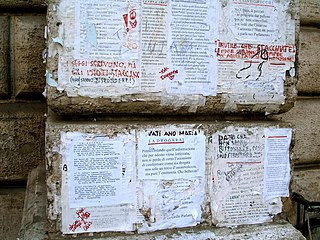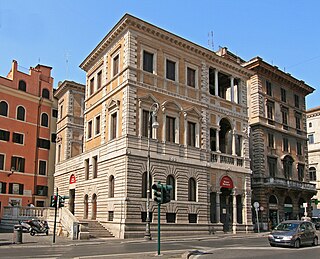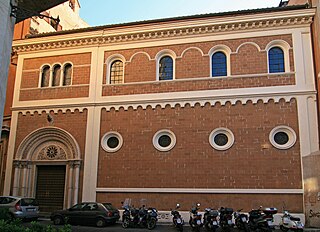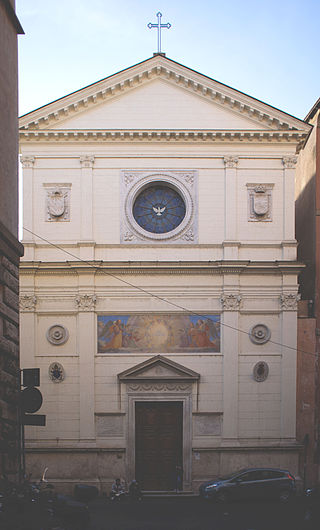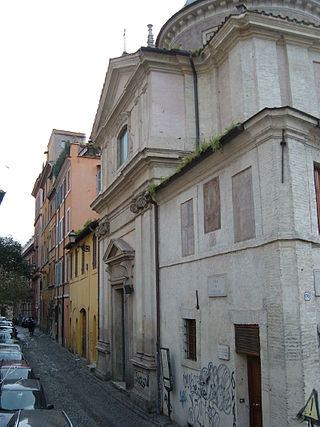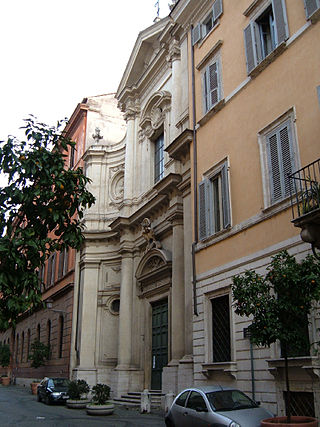Self-guided Sightseeing Tour #9 in Rome, Italy
Legend
Guided Free Walking Tours
Book free guided walking tours in Rome.
Guided Sightseeing Tours
Book guided sightseeing tours and activities in Rome.
Tour Facts
12.9 km
362 m
Experience Rome in Italy in a whole new way with our free self-guided sightseeing tour. This site not only offers you practical information and insider tips, but also a rich variety of activities and sights you shouldn't miss. Whether you love art and culture, want to explore historical sites or simply want to experience the vibrant atmosphere of a lively city - you'll find everything you need for your personal adventure here.
Activities in RomeIndividual Sights in RomeSight 1: Porta Praetoriana
Porta Pretoriana is a gate of the Aurelian Walls. The information about it is very scarce, so much so that it was walled up at an unspecified time. It is thought to be the first gate to be walled up, so it appears along a wall of the Castra Praetoria. It was the eastern gate of the Castra Praetoria, the large barracks of the Praetorian Guard that Emperor Tiberius built between 20 and 23 to bring together in a single location the 9 cohorts established by Augustus as the imperial guard. It never appeared among the gates of Rome, so much so that it is thought to have been closed by Constantine when he dissolved the Praetorians and when, between 270 and 273, Aurelian included the Praetorian camp in the city walls.
Sight 2: Museo Storico dei Bersaglieri
The Historical Museum of the Bersaglieri is located in Rome inside Porta Pia, created to preserve relics, documentation and memories relating to the campaigns of the Bersaglieri Corps. including the bicycle of Enrico Toti, a cyclist who fell in the First World War and was decorated with a gold medal for military valour. It has a library and a historical archive. From an administrative point of view, it is a military body under the Military Command of the Capital.
Sight 3: Chiesa del Sacro Cuore di Gesù
The Church of the Sacred Heart of Jesus is a Catholic place of worship in Rome, Italy, located in the Sallustiano district, in Via Piave.
Sight 4: Monumento a Giovanni Paolo II
The Monument to John Paul II is a memorial statue dedicated to the Pope John Paul II; it is located on an island alongside Viale Enrico di Nicola, in front of the Termini Train station in Rome, Italy.
Sight 5: Fountain of the Naiads
The Fountain of the Naiads is a fountain in Rome, Italy, located at the centre of the Piazza della Repubblica on the Viminal Hill. The fountain was created by the architect Alessandro Guerrieri in 1888. Its four bronze sculptures of naiads created by Mario Rutelli were added in 1901 and Rutelli's central sculpture of the god Glaucus was added in 1912.
Sight 6: San Bernardo alle Terme
San Bernardo alle Terme is a Baroque style, Catholic abbatial church located on Via Torino 94 in the rione Castro Pretorio of Rome, Italy. It is affiliated with the Benedictine order.
Sight 7: Fountain of Moses
The Fontana dell'Acqua Felice, also called the Fountain of Moses, is a monumental fountain located in the Quirinale District of Rome, Italy. It marked the terminus of the Acqua Felice aqueduct restored by Pope Sixtus V. It was designed by Domenico Fontana and built in 1585–1588. It is located at the intersection of Largo Santa Susanna and Via Venti Settembre; across and diagonal from the Largo, is the church of Santa Susanna, while across Via Venti Settembre is the church of Santa Maria della Vittoria.
Sight 8: Saint Andrew's Presbyterian Church of Scotland
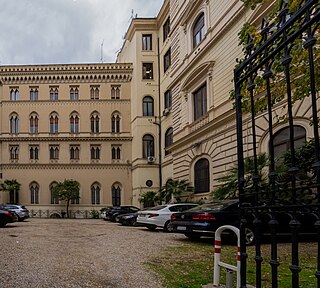
St Andrew's Church is a congregation of the Church of Scotland in Rome, Italy, belonging to the Church's International Presbytery. Services take place every Sunday at 11:00 a.m. in Via XX Settembre, 7 00187 Rome. Rev Tara Curlewis is minister at St Andrew's and Liaison Officer for the Reformed Ecumenical Office in Rome.
Sight 9: San Carlo alle Quattro Fontane
The church of San Carlo alle Quattro Fontane, also called San Carlino, is a Roman Catholic church in Rome, Italy. The church was designed by the architect Francesco Borromini and it was his first independent commission. It is an iconic masterpiece of Baroque architecture, built as part of a complex of monastic buildings on the Quirinal Hill for the Spanish Trinitarians, an order dedicated to the freeing of Christian slaves. He received the commission in 1634, under the patronage of Cardinal Francesco Barberini, whose palace was across the road. However, this financial backing did not last and subsequently the building project suffered various financial difficulties. It is one of at least three churches in Rome dedicated to San Carlo, including San Carlo ai Catinari and San Carlo al Corso.
Sight 10: Quattro Fontane (Four Fountains)
The Quattro Fontane is an ensemble of four Late Renaissance fountains located at the intersection of Via delle Quattro Fontane and Via del Quirinale in Rome. They were commissioned by Pope Sixtus V and built at the direction of Muzio Mattei, and were installed between 1588 and 1593.
Sight 11: San Nicola da Tolentino
San Nicola da Tolentino agli Orti Sallustiani is a church in Rome. It is referred to in both Melchiori's and Venuti's guides as San Niccolò di Tolentino, and in the latter it adds the suffix a Capo le Case. It is one of the two Roman national churches of Armenia. The church was built for the Discalced Augustinians in 1599, and originally dedicated to the 13th century Augustinian friar Saint Nicholas of Tolentino.
Wikipedia: San Nicola da Tolentino agli Orti Sallustiani (EN)
Sight 12: Santa Maria Immacolata a Via Veneto
Santa Maria della Concezione dei Cappuccini is a Roman Catholic church located at Via Vittorio Veneto, 27, just north of the Piazza Barberini, in Rome, Italy. It is the first Roman church dedicated to the Immaculate Conception.
Sight 13: Triton Fountain
Fontana del Tritone is a seventeenth-century fountain in Rome, by the Baroque sculptor Gian Lorenzo Bernini. Commissioned by his patron, Pope Urban VIII, the fountain is located in the Piazza Barberini, near the entrance to the Palazzo Barberini that Bernini helped to design and construct for the Barberini, Urban's family. This fountain should be distinguished from the nearby Fontana dei Tritoni by Carlo Francesco Bizzaccheri in Piazza Bocca della Verità which features two Tritons.
Sight 14: Sant’Ildefonso in Via Sistina
The church of Saints Ildefonso and Tommaso da Villanova is a church in Rome, in the Colonna district, in Via Sistina.
Wikipedia: Chiesa dei Santi Ildefonso e Tommaso da Villanova (IT)
Sight 15: Teatro Sistina
The Teatro Sistina is a theatre in Rome, Italy.
Sight 16: Galleria d'Arte Moderna
The Galleria Comunale d'Arte Moderna is the museum of modern and contemporary art of the city of Rome, Italy. It is housed in a former Barefoot Carmelite monastery dating from the 17th century and adjacent to the church of San Giuseppe a Capo le Case, at 24 Via Francesco Crispi.
Wikipedia: Galleria Comunale d'Arte Moderna, Rome (EN), Website
Sight 17: Teatro Salone Margherita
The Salone Margherita is a theater in Rome. Built in 1898 to establish itself as the main café-chantant in the capital, it is one of the greatest examples of Art Nouveau style.
Sight 18: Palazzo delle Esposizioni
The Palazzo delle Esposizioni is a neoclassical exhibition hall, cultural center and museum on Via Nazionale in Rome, Italy.
Sight 19: Teatro Eliseo
The Teatro Eliseo is a theatre located in Rome, Italy.
Sight 20: Magazzini di Lucio Nevio Clemente
The Magazzini di Lucio Nevio Clemente were a building for the trade of ancient Rome, the remains of which are perhaps to be identified with the brick building in Via Mazzarino, at the back of Villa Aldobrandini on the Quirinal Hill.
Sight 21: Obelisco del Quirinale
The Quirinale Obelisk is one of the thirteen ancient obelisks in Rome, located in Piazza del Quirinale, where it is part of the fountain of the Dioscuri.
Sight 22: Santa Croce e San Bonaventura dei Lucchesi
Santa Croce e San Bonaventura alla Pilotta or Santa Croce e di San Bonaventura dei Lucchesi is a church in Rome, sited on via dei Lucchesi in the Trevi district, between the Trevi Fountain and the Pontificia Università Gregoriana. It is Lucca's regional church in Rome.
Sight 23: Santissimo Sacramento al Tritone
The Church of the Blessed Sacrament is an oratory in Rome, in the Trevi district, located in Piazza Poli, along Via del Tritone.
Sight 24: Chiesa di Santa Maria in Via
Santa Maria in Via is a church in Rome. The church or a chapel existed in the 9th century, but was rebuilt following reports of a miracle. In 1165, it is recorded as Santa Maria in Via, whose appellative means "on the Way", with a reference to the nearby Via Flaminia.
Sight 25: Fontana di piazza colonna
The fountain in the Piazza Colonna is a fountain in Rome, Italy, designed by the architect Giacomo Della Porta and constructed by the Fiesole sculptor Rocco Rossi between 1575 and 1577.
Sight 26: Chiesa di Santa Maria in Aquiro
Santa Maria in Aquiro is a church in Rome, Italy. It is dedicated in honor of Mary, mother of Jesus, and is located on Piazza Capranica.
Sight 27: Teatro Capranica
The Teatro Capranica is a theatre situated at 101 Piazza Capranica in the Colonna district of Rome. Originally constructed in 1679 by the Capranica family and housed in the early Renaissance Palazzo Capranica, it was the second public theatre to open in Rome. It was the site of many premieres of Baroque operas including Caldara's Tito e Berenice, Scarlatti's Griselda, and Vivaldi's Ercole su'l Termodonte. The Capranica ceased operating as a full-scale theatre and opera house in 1881 and in 1922 was converted into a cinema. Following the closure of the cinema in 2000, it has functioned on a hire basis as a conference and performance venue.
Sight 28: Santa Maria Maddalena in Campo Marzio
The Santa Maria Maddalena is a Catholic church in Rome, Italy dedicated to Saint Mary Magdalene. It is the conventual church of the adjacent General Curia of the Clerks Regular, Ministers to the Sick (Camillians), the world headquarters of the order. Located on the Via della Maddalena, one of the streets leading from the Piazza della Rotonda and the Pantheon in the Campo Marzio area, it is also Romes regional church for the people of Abruzzo.
Sight 29: San Salvatore alle Coppelle
San Salvatore alle Coppelle is a church in Rome, on piazza delle Coppelle in the Sant'Eustachio district.
Sight 30: Chiesa di Santa Maria della Pace
Santa Maria della Pace is a Catholic church in Rome, Italy, not far from Piazza Navona. The building lies in rione Ponte. It is part of a conventual structure that includes the Chiostro del Bramante formerly home to Canons Regular of the Lateran and later the Order of Preachers. The monastery is now used for secular purposes while the church has become one of Rome's national churches, devoted to the people of Chile.
Sight 31: Chiesa di San Tommaso in Parione
San Tommaso in Parione is one of the two national churches of Eritrea in Rome. It is dedicated to St Thomas the Apostle. The church is normally open to the public every Sunday.
Sight 32: Piazza Navona
Get Ticket*Piazza Navona is a public open space in Rome, Italy. It is built on the site of the 1st century AD Stadium of Domitian and follows the form of the open space of the stadium in an elongated oval. The ancient Romans went there to watch the agones ("games"), and hence it was known as "Circus Agonalis". It is believed that over time the name changed to in avone to navone and eventually to navona.
Sight 33: Obelisk of Piazza Navona
The Agonale obelisk is an obelisk of the first century in Rome and overlooks the Fountain of the Four Rivers in Piazza Navona, in the Parione district.
Sight 34: Church of Saint Louis the French
The Church of St. Louis of the French is a Catholic church near Piazza Navona in Rome. The church is dedicated to the patron saints of France: Virgin Mary, Dionysius the Areopagite and King Louis IX of France.
Sight 35: Chiesa di San Macuto
San Macuto is a Catholic church located on Piazza di San Macuto in the Colonna rione of Rome, Italy. Located next to the Jesuit Collegio di San Roberto Bellarmino in the Palazzo Gabrielli-Borromeo, it is the only church in Italy dedicated to the 7th century Breton saint Malo.
Sight 36: Oratorio di San Francesco Saverio
The Oratory of San Francesco Saverio del Caravita is a 17th-century baroque oratory in Rome, near the Church of Sant’Ignazio in rione Pigna. It is home to the Caravita Community, an international English-language Catholic community in Rome.
Wikipedia: Oratory of San Francesco Saverio del Caravita (EN)
Sight 37: Palazzo Doria Pamphilj
The Galleria Doria Pamphilj is a large private art collection housed in the Palazzo Doria Pamphilj in Rome, Italy, between Via del Corso and Via della Gatta. The principal entrance is on the Via del Corso. The palace façade on Via del Corso is adjacent to a church, Santa Maria in Via Lata. Like the palace, it is still privately owned by the princely Roman family Doria Pamphili. Tours of the state rooms often culminate in concerts of Baroque and Renaissance music, paying tribute to the setting and the masterpieces it contains.
Sight 38: Galleria Colonna
The Palazzo Colonna is a palatial block of buildings in central Rome, Italy, at the base of the Quirinal Hill, and adjacent to the church of Santi Apostoli. It is built in part over the ruins of an old Roman serapeum, and it has belonged to the prominent Colonna family for over twenty generations.
Sight 39: Chiesa di Santo Stefano del Cacco
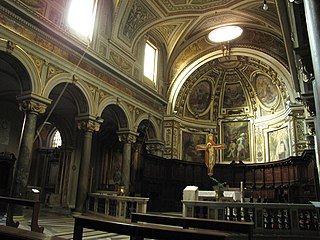
Santo Stefano de Pinea or more commonly Santo Stefano del Cacco is a church in Rome dedicated to Saint Stephen, located at Via di Santo Stefano del Cacco 26.
Sight 40: Area sacra dell'Argentina
Largo di Torre Argentina is a large open space in Rome, Italy, with four Roman Republican temples and the remains of Pompey's Theatre. It is in the ancient Campus Martius.
Sight 41: Teatro Argentina
The Teatro Argentina is an opera house and theatre located in Largo di Torre Argentina, a square in Rome, Italy. One of the oldest theatres in Rome, it was constructed in 1731 and inaugurated on 31 January 1732 with Berenice by Domenico Sarro. It is built over part of the curia section of the Theatre of Pompey. This curia was the location of the assassination of Julius Caesar.
Sight 42: Gesù Nazareno all’Argentina
The Church of Jesus Nazarene is a church in Rome, in the Sant'Eustachio district, in via dei Barbieri.
Sight 43: San Pantaleo
San Pantaleo is an ancient church located on a piazza of the same name along Corso Vittorio Emanuele II in the Parione neighborhood of Rome, Italy. It shares the Piazza with the Museo di Roma in Palazzo Braschi. A church at the site dates from the 12th-century, but the present facade (1807) is in a Neoclassical style and the interiors were elaborated in a Baroque style.
Sight 44: Statua parlante di Pasquino
Pasquino or Pasquin is the name used by Romans since the early modern period to describe a battered Hellenistic-style statue perhaps dating to the third century BC, which was unearthed in the Parione district of Rome in the fifteenth century. It is located in a piazza of the same name on the northwest corner of the Palazzo Braschi ; near the site where it was unearthed.
Sight 45: Museo di scultura antica Giovanni Barracco
Museo Barracco di Scultura Antica is a museum in Rome, Italy, featuring a collection of works acquired by the collector Giovanni Barracco, who donated his collection to the City of Rome in 1902.
Sight 46: Chiesa di San Tommaso di Canterbury
The church of San Tommaso di Canterbury is a Catholic place of worship in the historic center of Rome, located in the Regola district, in Via Monserrato at the height of Piazza Santa Caterina della Rota. It is located within the Venerable English College.
Sight 47: Chiesa dello Spirito Santo dei Napoletani
Santo Spirito dei Napoletani is a Roman Catholic church on via Giulia, in the Regola rione of Rome. It was the national church of the Kingdom of the Two Sicilies and is now the regional church for Campania.
Sight 48: Chiesa di Sant'Eligio degli Orefici
Sant'Eligio degli Orefici is a church in Rome, Italy. It is located in the rione Regola, near via Giulia, on a corner of the via of the same name that ends below the Lungotevere dei Tebaldi, a few blocks northwest of the Palazzo Farnese.
Sight 49: Chiesa di Santa Caterina da Siena
Santa Caterina da Siena is a church in Rome dedicated to Catherine of Siena. It is sited on via Giulia in the Regola district.
Share
How likely are you to recommend us?
Disclaimer Please be aware of your surroundings and do not enter private property. We are not liable for any damages that occur during the tours.
GPX-Download For navigation apps and GPS devices you can download the tour as a GPX file.
